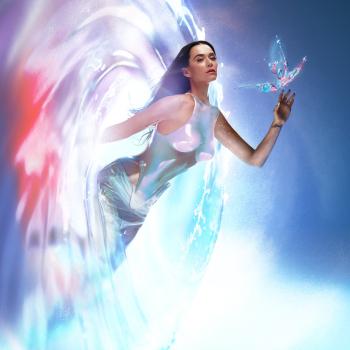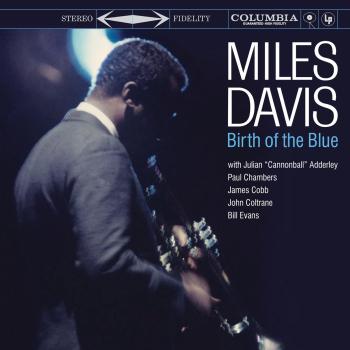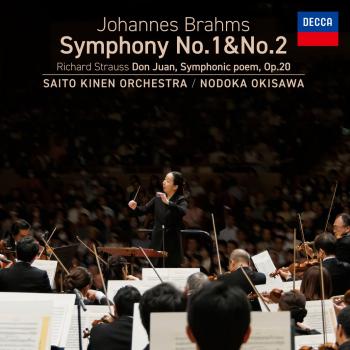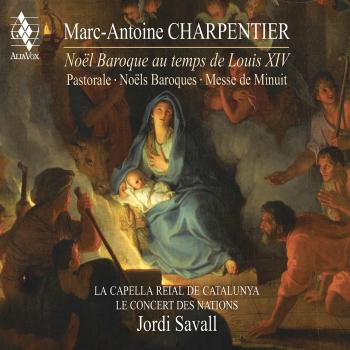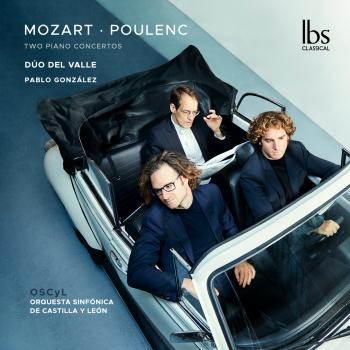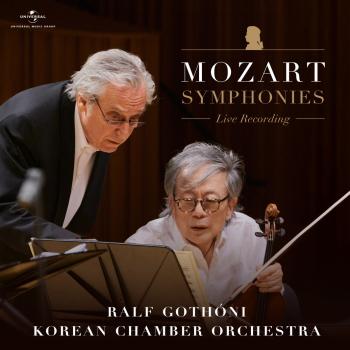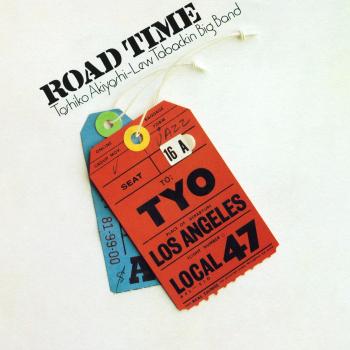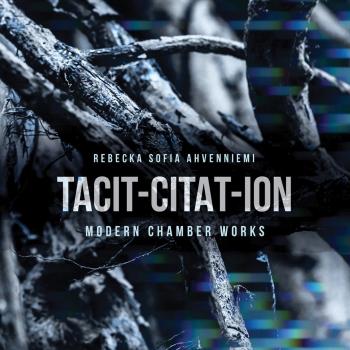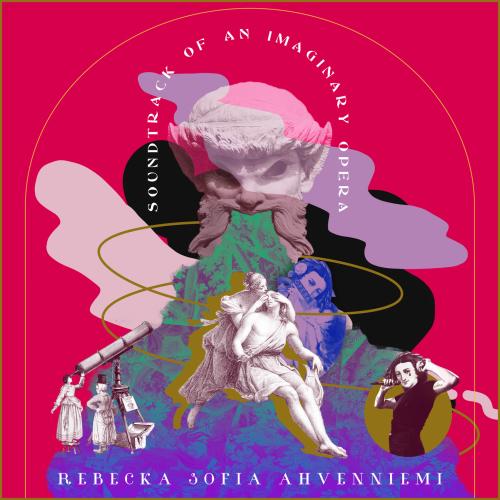
Soundtrack of an Imaginary Opera Rebecka Sofia Ahvenniemi
Album info
Album-Release:
2022
HRA-Release:
17.10.2023
Label: Ravello Records
Genre: Classical
Subgenre: Vocal
Artist: Rebecka Sofia Ahvenniemi
Composer: Rebecka Sofia Ahvenniemi
Album including Album cover
- Rebecka Sofia Ahvenniemi (b. 1982):
- 1 Ahvenniemi: Beauty Hurts 06:17
- 2 Ahvenniemi: Who Is Your Daddy? Who Is Your Mommy? 04:31
- 3 Ahvenniemi: Leave Life 06:17
- 4 Ahvenniemi: Nymph Cry 04:57
- 5 Ahvenniemi: Bonus Track: Es dringen Blüten 02:30
Info for Soundtrack of an Imaginary Opera
This album is the soundtrack to an opera that does not exist in reality. The listener is invited to imagine a drama behind the six individual “soundtrack songs.” The aim of the music is to open up an imaginary world, where traditions of opera and social identity are reflected.
Opera as a musical genre is often described as presenting characters, feelings, and dramas that relate to something universal within our human being-ness. However, most historical operas – in their librettos and musical narratives – have been formed by white, Western males, belonging to certain social backgrounds, and may exclude other perspectives. What kind of ideas and attitudes does the Western history of opera reflect? How is an ideal woman depicted, for example?
Instead of answering these questions directly, or attempting to find a neutral position outside of these traditions, this “opera soundtrack” brings in different musical expressions and clichés that already circulate within culture in general, including in popular music. These are brought to a musical laboratory for examination. The compositional approach in some of the songs could be described as cultural interpretation. Further, some of the approach could be depicted as “musical dumpster diving,” meaning the act of finding fruitful materials in areas that are not ordinarily considered as belonging to the domains of high culture. This work takes a critical stance with regards to the idea that self-definition can be gained without considering the historical background of the tradition in which one works. Without reflection on cultural context, one may end up unknowingly reproducing certain norms or power mechanisms.
The content of the songs themselves is neither political nor argumentative. Rather, the album tracks aim at playfulness. The instrumentation itself – three voices, percussion, synthesizer, (electric) guitar, violin, and cello – is distanced from a traditional, idiomatic understanding of opera by enabling musical landscapes that move between different genres and expressions. Further, the fragmented form of a “soundtrack” allows for a certain lightness and interpretational space between the individual songs. The libretto employs a constructed ‘opera language’: references, quotes, and phrases from opera and other contexts, formed throughout the process of composition.
Beauty Hurts, which refers to Monteverdi’s L’Orfeo, opens the soundtrack. Thus, it begins its story from the very start of the tradition of Western opera. This song suggests that it was partly because of youthful desires that Orpheus needed to turn around and look at Euridice right before they had reached the threshold between the Underworld and the real world, and that this is why she had to return to the “shades of dark.” The song also refers to modern ideals of beauty, describing how she is waxing her skin and spraying it with a spray that reflects light to look beautiful. She also asks whether we like her ass [‘assimo’] large or tiny. Thus, her role is to maintain her own beauty, yet for the same reason she is denied return to the light from the Underworld.
The two following pieces, Punish Me Please and Who Is Your Daddy? Who Is Your Mommy? bring in the concept of negotiation of power. Punish Me Please presents a dichotomy—whether the character expresses her own will, or whether she has learned a language that, paradoxically, gives her power. She repeats a submissive vocabulary that already exists, but sounds bossy and demanding when doing so. Who Is Your Mommy? Who Is Your Daddy? functions as a metaphor for some heteronormative power dynamics. One could ask who really carries the power in any situation where one party, in one way or another, attempts to control the other. The more you claim control, paradoxically, the more powerless you may end up feeling. However, the song presents a sexual scene, suggesting elements that may be associated with sadomasochism: both parties aiming at power, with the music thus functioning as a playful domain of negotiation rather than an abusive situation.
Leave Life presents the idea of death, and perhaps the theme of codependency between lovers, present in some of the Western history of opera. However, here this “love” is isolated from any narrative context and explored as a naked, emotional, and romantic musical expression.
The two final pieces, Nymph Cry and Bonus Track: Es dringen Blüten, emphasize bewilderment and lack of simple solutions when it comes to questions of the choices of future direction and self-definition. Nymph Cry combines a threatening musical landscape with the phrase “beauty hurts” in ‘opera language,’ and further, clichés from popular music, yet with a slight twist: “I can live without you.” Bonus Track: Es dringen Blüten refers to something growing, chaotically, presenting this through a partly synthetic, partly acoustic musical landscape. This is contextualized with a musical phrase of Goethe, beginning with “es dringen Blüten,” referring to classicism as a musical epoch, giving the illusion that the world is in good order. Placing this in the middle of the chaos may communicate bewilderment and estrangement, but also a strange optimism.
Thank you to the musicians and other collaborators, who were selected specifically for this project, based on their unique musical backgrounds, expertise, and willingness to curiously approach the subject at hand. (Rebecka Sofia Ahvenniemi)
Elisabeth Holmertz, vocals
Martina Starr-Lassen, vocals
Ørjan Hartveit, vocals
Jutta Morgenstern, violin
Agnese Rugevica, cello
Erik Håkon Halvorsen, synthesizer
Ole André Farstad, guitar
Owen Weaver, percussion
No biography found.
This album contains no booklet.

